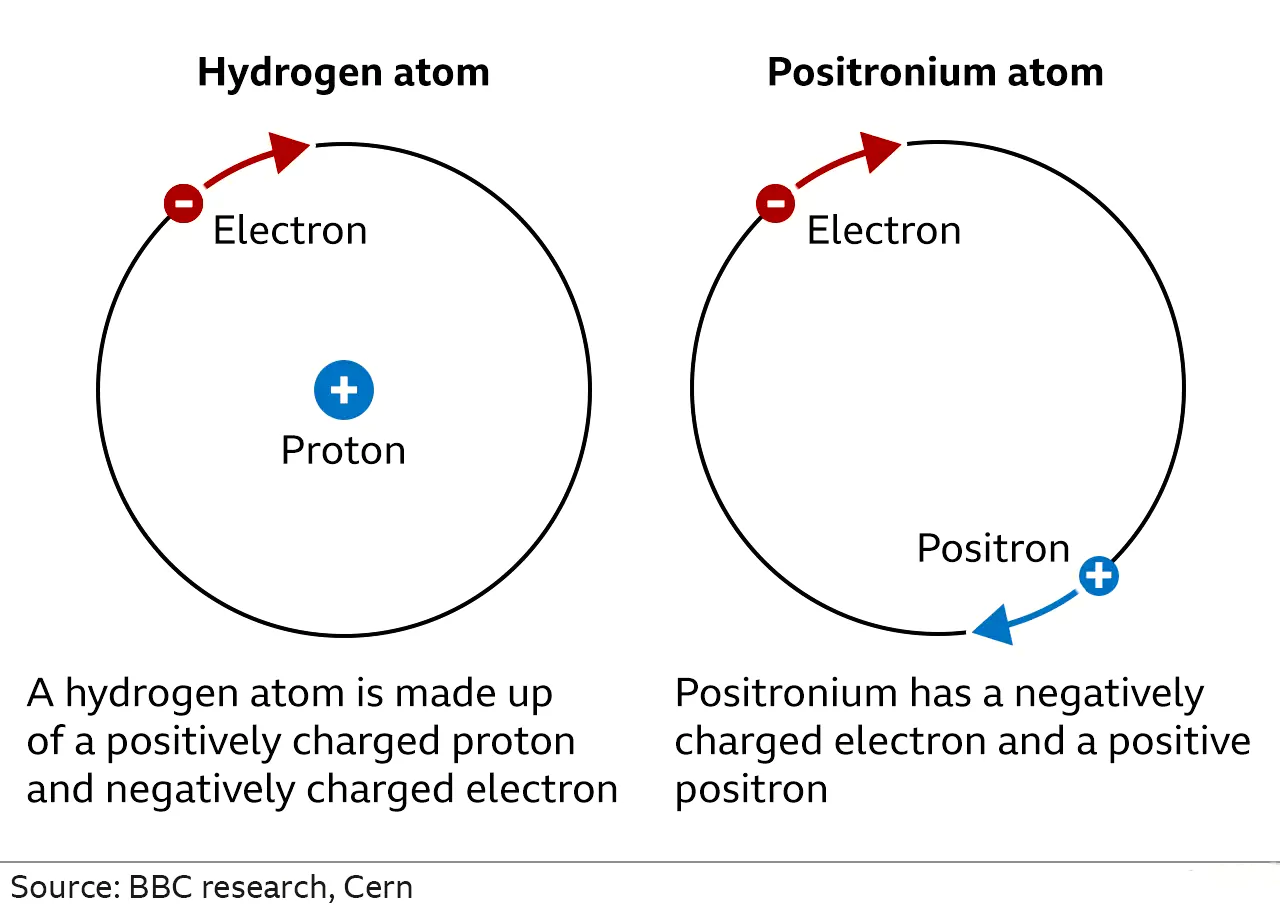Context:
In the recently published paper in the Physical Review Letters, the AE¯gIS team has described the laser cooling of Positronium atoms achieved from a Broad-based laser system.
Positronium (an electron orbiting a positron)
- Positronium is a fundamental atom that comprises an electron (e^-) and a positron (e^+).
- Its mass is twice the electron mass and enjoys the unique distinction of being a pure leptonic atom
- It has a very short life and it annihilates with a half-life of 142 nano-seconds.
- Importance: It has a hydrogen-like system but with halved frequencies for excitation, making it a great contender for performing tests of fundamental theories in physics.
|
International Collaboration of Physicists Achieves First Successful Laser Cooled Positronium
- The experiment was performed at the European Organization for Nuclear Research, (CERN) Antimatter Factory in Geneva.
- Conducted by: An international team of Physicists representing 19 European and one Indian research group comprising the Antihydrogen Experiment: Gravity, Interferometry, Spectroscopy (AEgIS) collaboration demonstrated the laser cooling of Positronium.

About Laser Cooling
- Laser cooling is a technique in atomic physics and quantum optics that can slow down and trap atomic and molecular particles.
- The method is based on the interaction between light and charged matter, and it exploits the way in which photons transfer momentum to atoms.
European Council for Nuclear Research CERN:
- Founded in 1954, the CERN laboratory sits astride the Franco-Swiss border near Geneva.
- Member states: 23 members with India being the associate member
- Aim: To study the basic constituents of matter ie. fundamental particles and to advance the boundaries of human knowledge by delving into the smallest building blocks of our universe.
- CERN’s main area of research is particle physics.
- Instruments: CERN uses purpose-built particle accelerators and detectors.
|
Working Principle Of Laser Cooling
- It is based on the absorption and re-emission of photons.
- When an atom absorbs a photon, its energy is increased, and it moves to a higher energy level.
- When it later re-emits the photon, it loses energy and falls back to a lower energy level.
- The key to laser cooling is to ensure that the atom always re-emits the photon in a direction opposite to its motion.
- This means that, on average, the atom loses more momentum to the photons than it gains, and slows down as a result. This allows atoms to be captured in optical traps.
- This is normally done using a narrow-band laser, which emits light with a small frequency range.
- The AEgIS team however used a broad-band laser (~380 Kelvin (106.85 degrees Celsius) to ~170 Kelvin (minus 103.15 degrees Celsius), using a 70-nanosecond pulsed alexandrite-based laser system) in their experiment which helped cool the positronium sample.
- The experiment was carried out without applying any external electric or magnetic field, simplifying the experimental setup and extending the positronium lifetime.
Significance Of Laser Cooling
- Advanced studies in Particle Physics: It will help to improve understanding of the physical nature, comprising matter and anti-matter facilitated through the interaction between light and charged matter.
- Formation of hydrogen (a positron orbiting an antiproton): This is an important Precursor experiment to the formation of anti-hydrogen and the measurement of Earth’s gravitational acceleration on antihydrogen.
- Open New Avenues: It could open prospects to produce a gamma-ray laser that would eventually allow researchers a look inside the atomic nucleus and may have probable applications beyond physics.
- A ground for Future experiments: To perform spectroscopic comparisons required for the Quantum Electrodynamics (QED), the study of the light and its interaction with charged matter, and a possible degenerate gas of Positronium could be achieved.
- New possibilities for antimatter research: It will allow high-precision measurements of the properties and gravitational behaviour of the simple matter–antimatter system, which could reveal newer physics.
- Bose–Einstein condensate: It also allows the production of a positronium Bose–Einstein condensate, in which all constituents occupy the same quantum state.
- A Bose-Einstein Condensate of Antimatter: It would be a tool for fundamental and applied research.
- Such a condensate has been proposed as a candidate to produce coherent gamma-ray light via the matter-antimatter annihilation of its constituents – laser-like light made up of monochromatic waves that have a constant phase difference between them.
Also Read: Astronomers Discovers The Small, Hot Helium Star
News Source: The Indian Express
![]() 23 Feb 2024
23 Feb 2024
